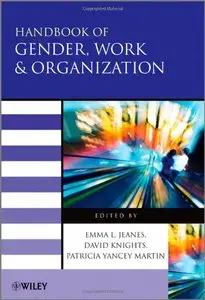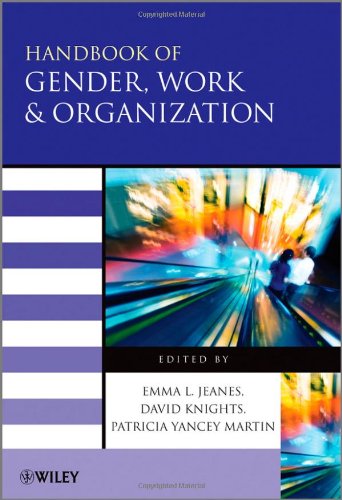Handbook of Gender, Work and Organization by Emma Jeanes and David Knights
English | 2011 | ISBN: 144439472X | 496 pages | PDF | 2 MB
English | 2011 | ISBN: 144439472X | 496 pages | PDF | 2 MB
This work of reference represents a remarkably complete, detailed and extensive review of the field of gender, work and organization in the second decade of the 21 st century. Its authors represent eight countries and many disciplines including management, sociology, political science, and gender studies. The chapters, by top scholars in their areas of expertise, offer both reviews and empirical findings, and insights and challenges for further work. The chapters are organized in five sections: Histories and Philosophies; Organizing Work and the Gendered Organization; Embodiment; Globalization; and Diversity. * Theoretical and conceptual developments at the cutting edge of the field are explicated and illustrated by the handbook s authors. * Methods for conducting research into gender, work and organization are reviewed and assessed as well as illustrated in the work of several chapters. * Efforts to produce greater gender equality in the workplace are covered in nearly every chapter, in terms of past successes and failures. Military organizations are presented as one of the difficult to change in regards to gender (with the result that women are marginalized in practice even when official policies and goals require their full inclusion). * The role of the body/embodiment is emphasized in several chapters, with attention both to how organizations discipline bodies and how organizational members use their bodies to gain advantage. Particular attention is paid to sexuality in/and organizations, including sexual harassment, policies to alleviate bias, and the likelihood that future work will pay more attention to the body s presence and role in work and organizations. * Many chapters also address change efforts that have been employed by individuals, groups, and organizations, including transnational ones such as the European Union, the United Nations, and so on.
In addition to its value for teachers and students within this field, it also offers insights that would be of value to policy makers and practitioners who need to reflect on the latest thinking relating to gender at work and in organizations.



